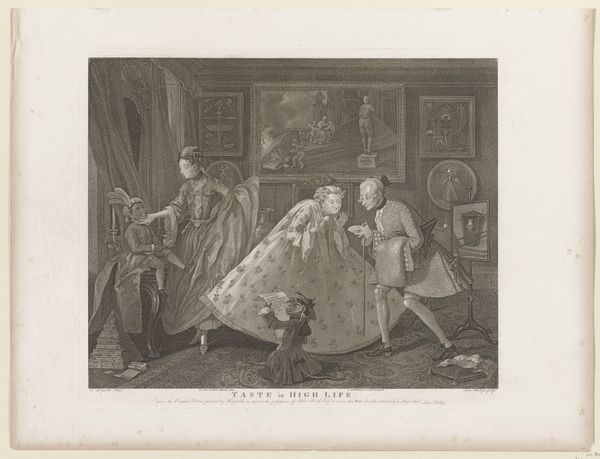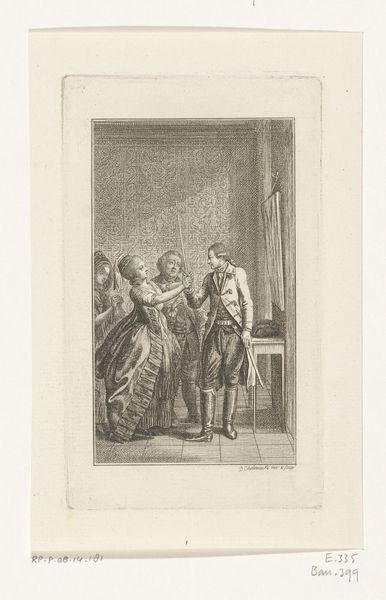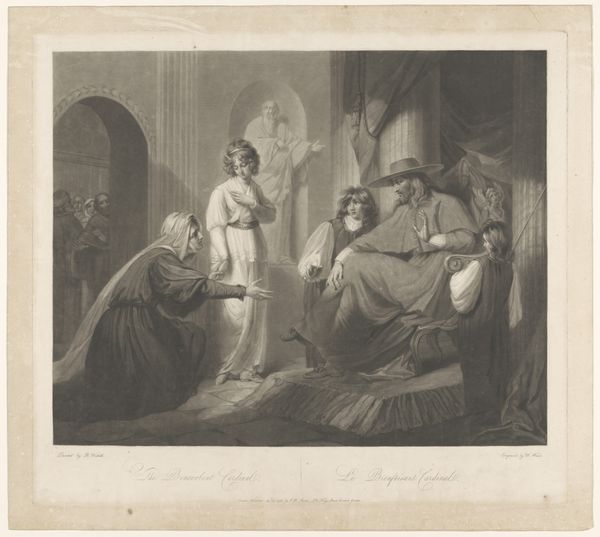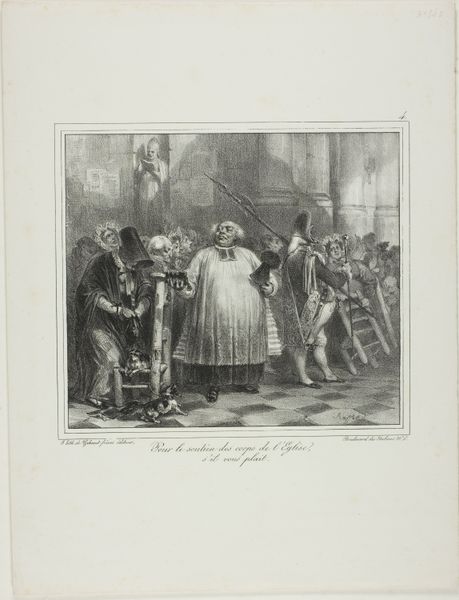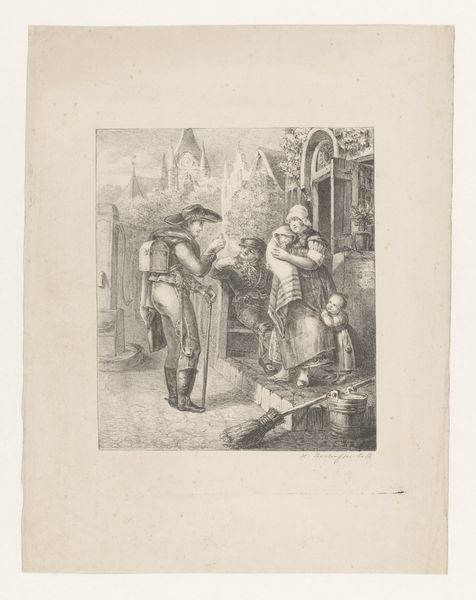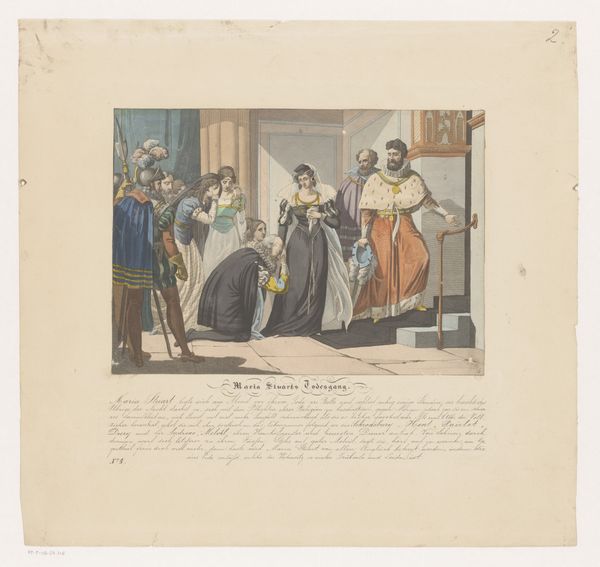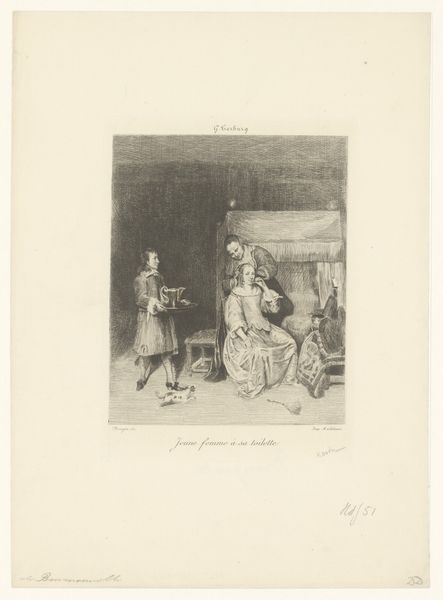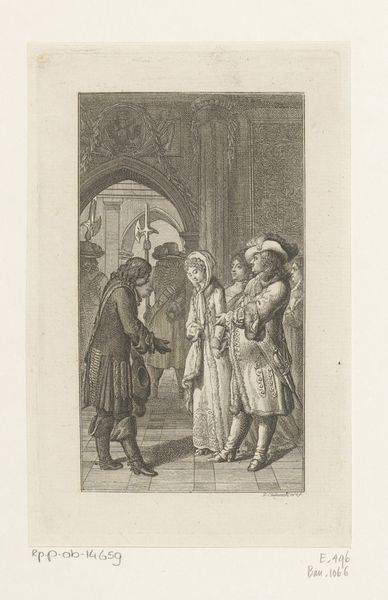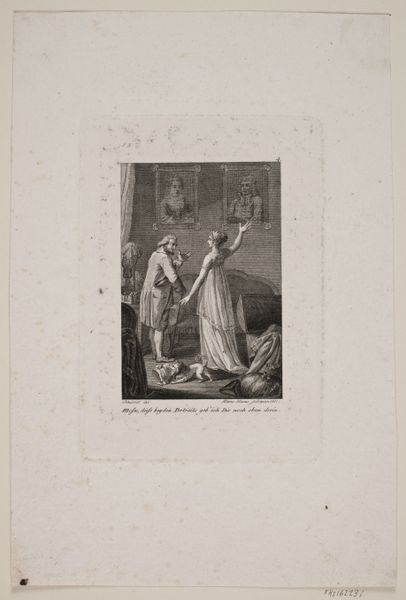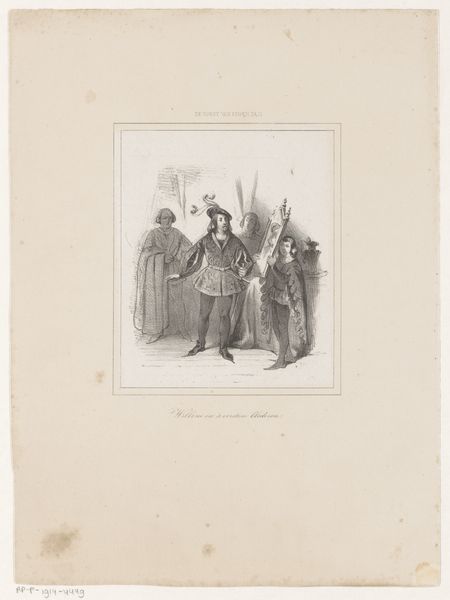
Dimensions: Sheet: 14 3/16 × 10 13/16 in. (36 × 27.4 cm) Plate: 6 in. × 6 1/16 in. (15.3 × 15.4 cm)
Copyright: Public Domain
Editor: So, this is Félix Bracquemond’s "Venetian Promenade," from 1863, done with etching and engraving. There’s a theatrical air about it. The figures look like they are performing, almost. What kind of commentary do you think Bracquemond is making with this piece? Curator: That theatricality you’re sensing is quite telling. Consider the political climate of mid-19th century France. There's this growing interest in historical accuracy in art and performance, reflecting a national fascination with its past. Bracquemond presents a scene that feels both historical and staged, doesn't it? Think about who controlled narratives during this time. Editor: Absolutely. It's like he's aware he is constructing a historical scene for a contemporary audience. What’s fascinating is the idea that history itself can be seen as a performance, and the artwork too. Curator: Exactly. Bracquemond’s piece participates in the discourse about how we consume and interpret historical events. Who is being represented, how, and for what purpose? Is this intended as nostalgia, or perhaps a commentary on the constructed nature of power and tradition? Editor: The controlled composition within a black and white medium really directs your focus. I hadn’t really thought about the political implications, though, mostly focused on what I thought was romantic. Curator: Artworks often engage with power dynamics, sometimes subtly, sometimes overtly. Understanding the institutional frameworks surrounding the work -- the museums, the salons, the critical press -- helps to decode those meanings. It pushes us to consider the public role of art. What is this work saying about French society and its understanding of history? Editor: It makes you wonder about who had access to art like this. Were these prints intended for a wide audience, influencing public perception? I see that it makes more sense considering historical context now. Thanks! Curator: Precisely! Considering who is meant to view this allows for critical insight. Thinking through whose gaze this catered to opens further discussions on the socio-historical dynamics of art and society.
Comments
No comments
Be the first to comment and join the conversation on the ultimate creative platform.
